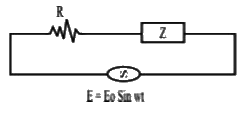tem
Step by step video solution for tem by Biology experts to help you in doubts & scoring excellent marks in Class 12 exams.
Similar Practice Problems
- Question 1 - Select One
statement-1 : No tem in the concentration of a pure solid ora pure liquid appears in an equilibrium constant expression.
statement-2 : Each pure solid or pure liquid is in a phase by itself, and has a constant concentration at constant temperature.AStatement-1 is True, Statement-2 is True, Statement-2 is a correct explanation for Statement-1.BStatement-1 is True, Statment-2is True ,Statement-2is not a correct explanation for Statement-1.CStatement-1 is True, Statement-2 is FalseDStatement-1 is False, Statement-2 is True. - Question 1 - Select One
[A]: The rate of photosynthesis is determined in terms of the rate of production either per unit mass of green tissue or per unit weight of total chlorophyll.
[R]: Amount of light, CO2 supply and tem- perature are important internal factors 'that directly affect the photosynthesis.AIf both A and R are true and R is the correct explanation of ABIf both A and R are true but R is not the correct explanation of ACIf A is true and R is falseDIf both A and R are false - Question 1 - Select One
Arrange the following steps in a sequential order to measure the specific heat capacity of a substance using a calorimeter.
(A) Calculate the amount of heat energy lost by the hot substance.
(B) Measure the common temperature of the mixture in calorimeter, and calculate the fall in tem perature of hot substance and rise in temperature of the water and the calorimeter.
(C) Calculate the heat gained by the water and the calorimeter.
(D) Take a hot substance measure its mass and temperature, and mix it with the water in calorimeter.
(E) Take some water in a calorimeter, measure the mass of water, mass of the calorimeter and temperature of water and the calorimeter.
(F) Equate the heat lost by the hot substance and heat gained by the water and the calorimeter calculate the specific heat capacity of the substance.AEADBCFBACDEBFCEDBACFDEACBDF - Question 1 - Select One
A word arrangement machine arranges the given input of words in a particular manner to generate codes for the disposal of manufactured goods in a factory in different lots. Following is an illustration of arrangement of words for different lots:
1st lot: fam mus tan san vic dev ith
2nd lot: dev fam mus tan san vic ith
3rd lot: dev fam ith mustan san vic
4th lot: dev fam ith mus san tan vic
And so on till the words are fully arranged. When the words are fully arranged, as above, the machine comes to a halt.
Which of the followind could be the code for the first lot if the code for the fourth lot reads "clo ele mex reh tem tru"?A"clo ele mex reh tem tru"Breh tru clo ele tem mexCreh ele tem tru clo mexDCan't be determined - Question 1 - Select One
Read the following text and answer the following questions on the basis of the same:
Electron Microscope
Electron microscopes use electrons to illuminate a sample. In Transmission Electron Microscopy (TEM), electrons pass through the sample and illuminate film or a digital camera. Resolution in microscopy is limited to about half of the wavelength of the illumination source used to image the sample. Using visible light the best resolution that can be achieved by microscopes is about −200nm. Louis de Broglie showed that every particle or matter propagates like a wave. The wavelength of propagating electrons at a given accelerating voltage can be determined by
l=h√2mev. Thus the wavelength of electrons is calculated to be 3.88pm when the microscope is operated at 100keV, 2.74pm at 200keV and 2.24pm at 300keV. However, because the velocities of electrons in an electron microscope reach about 70% the speed of light with an accelerating voltage of 200keV, there are relativistic effects on these electrons. Due to this effect, the wavelength at 100keV, 200keV and 300keV in electron microscopes is 3.70pm, 2.51 pm and 1.96pm, respectively. Anyhow, the wavelength of electrons is much smaller than that of photons (2.5pm at 200keV). Thus if electron wave is used to illuminate the sample, the resolution of an electron microscope theoretically becomes unlimited. Practically, the resolution is limited to ~−0.1nm due to the objective lens system in electron microscopes. Thus, electron microscopy can resolve subcellular structures that could not be visualized using standard fluorescences microscopy.
In electorn microscope, electron is usedAto charge the sampleBto clean the sampleCto illuminate the sampleDAll of the above
Similar Questions
Explain why a clinical thermometer is exclusively used to measure the human body temperature and a laboratory thermometer is used to measure the temperatures of different substances but not to measure the human body temperature .
View SolutionAnalternating voltage E=E0sinωt is applied to a circuit containıng a resistor R connected in series with a black box. The current in the circuit is found to be =I0sin(ωt+π/4).

Draw the corresponding phasor diagram and find the impedance in tems of R.View SolutionIn a sequence of 21 terms the first 11 terms are in A.P. with common difference 2. and the lastterms are in G.P. with common ratio 2. If the middle tem of the A.P. is equal to themiddle term of the G.P., then the middle term of the entire sequence is
View SolutionThe sum of 'n' terms of an A.P is 715.If first term is incrased by 1, second term is increased by 3, third term is increased by 5 and so on kth term is increased by kth odd integer then sum of 'n' tems is 836 then value of (n/6) is
View SolutionThe sum of 20 terms of a series of which every even term is 2 times the term before it, every odd term is 3 times the term before it, the first tem being unity is (27)(610−1) b. (37)(610−1) c.(35)(610−1) d. none of these
View Solution

